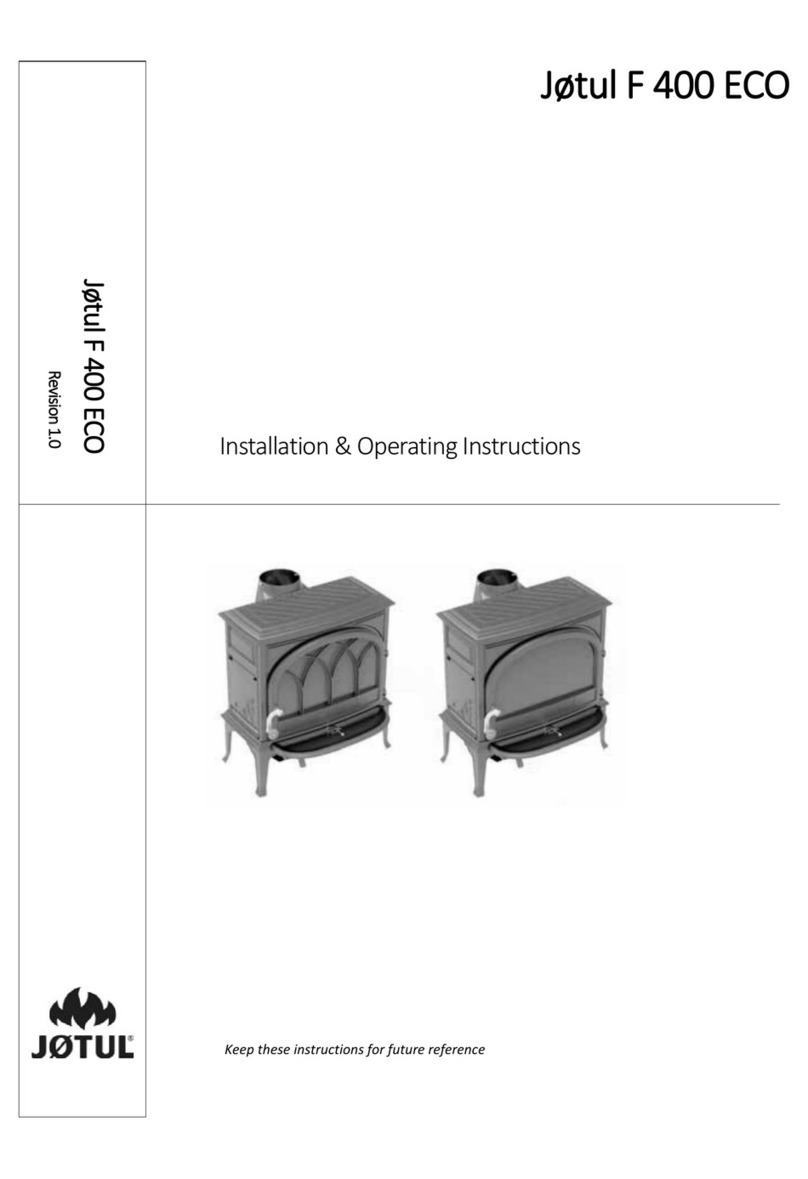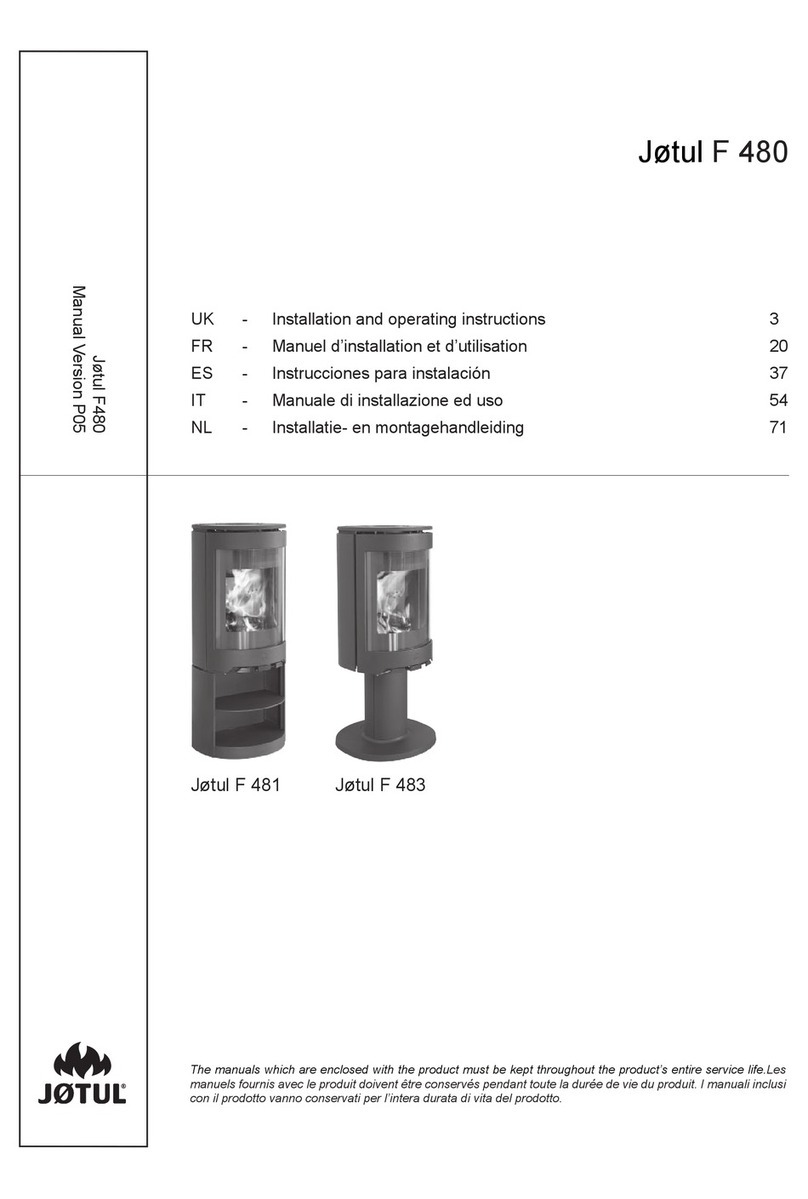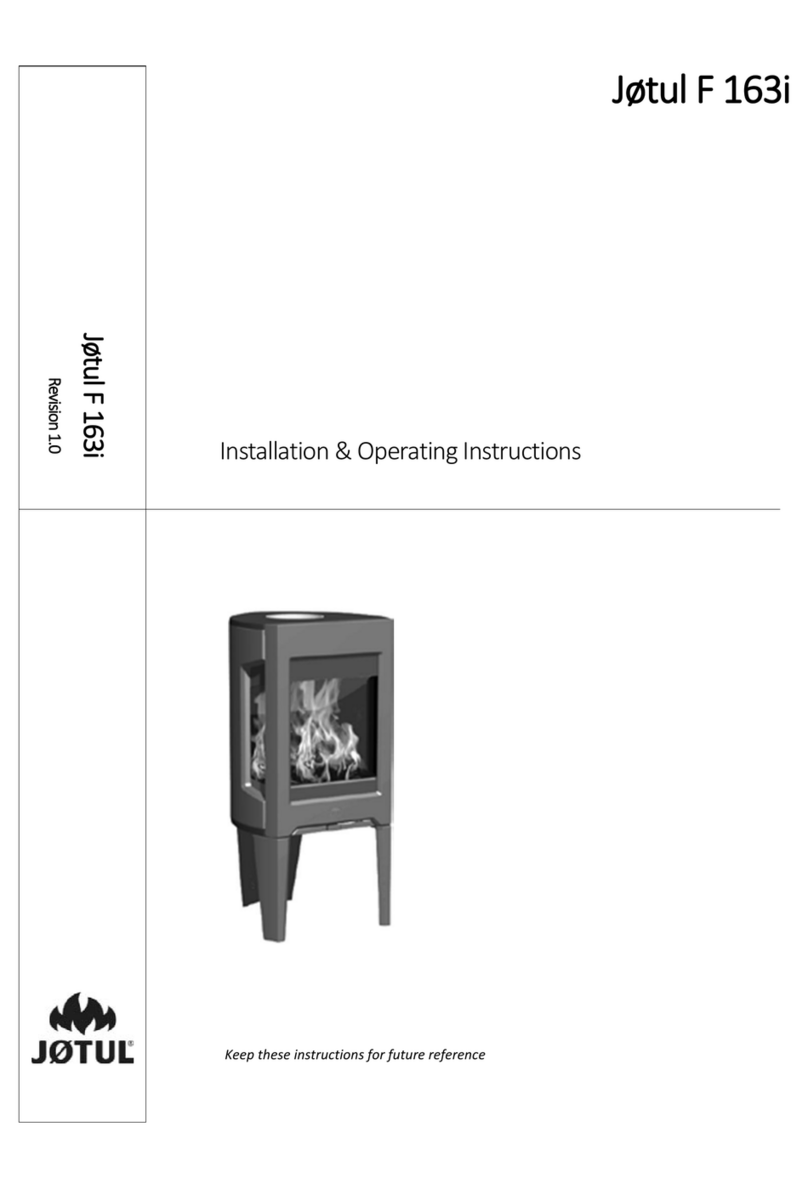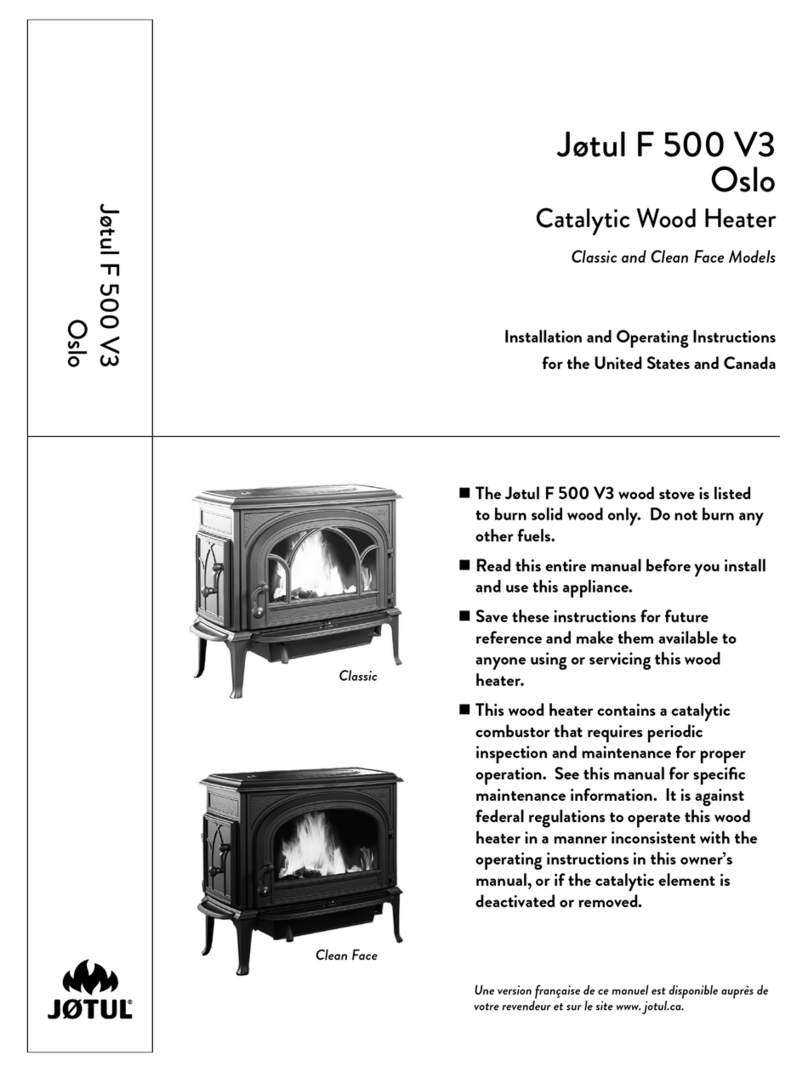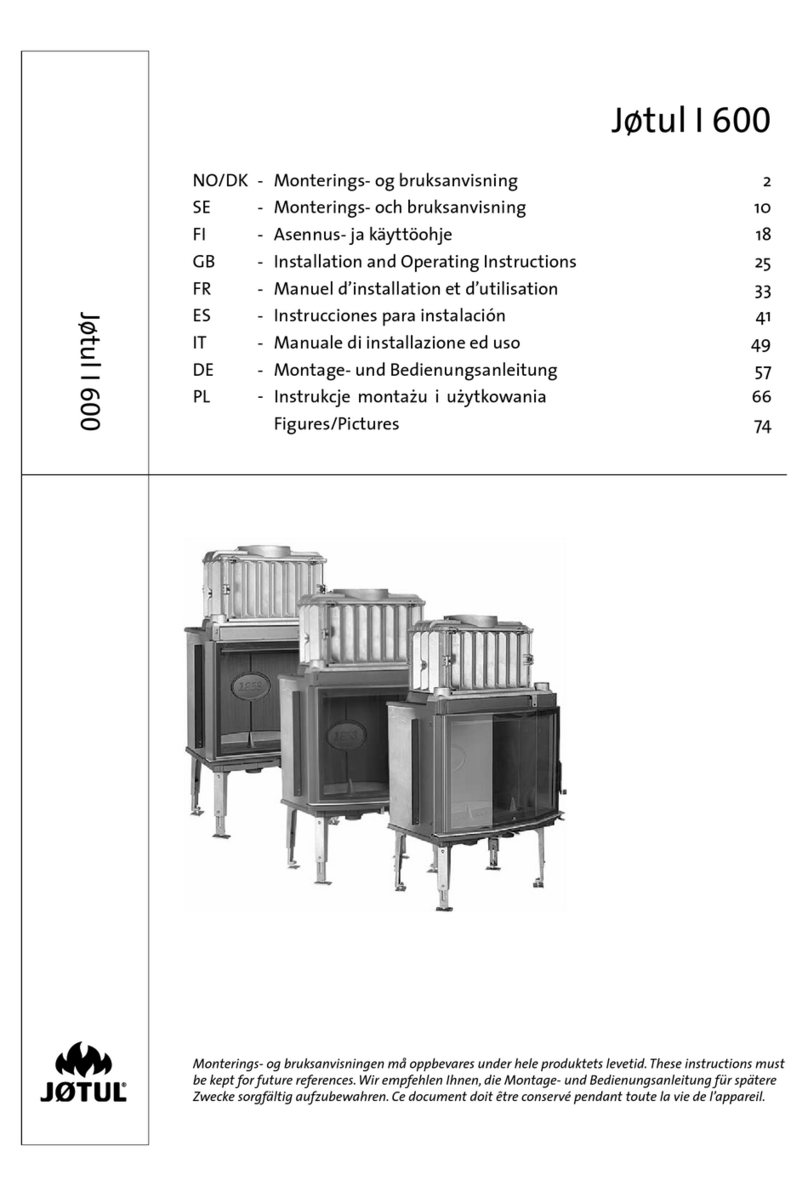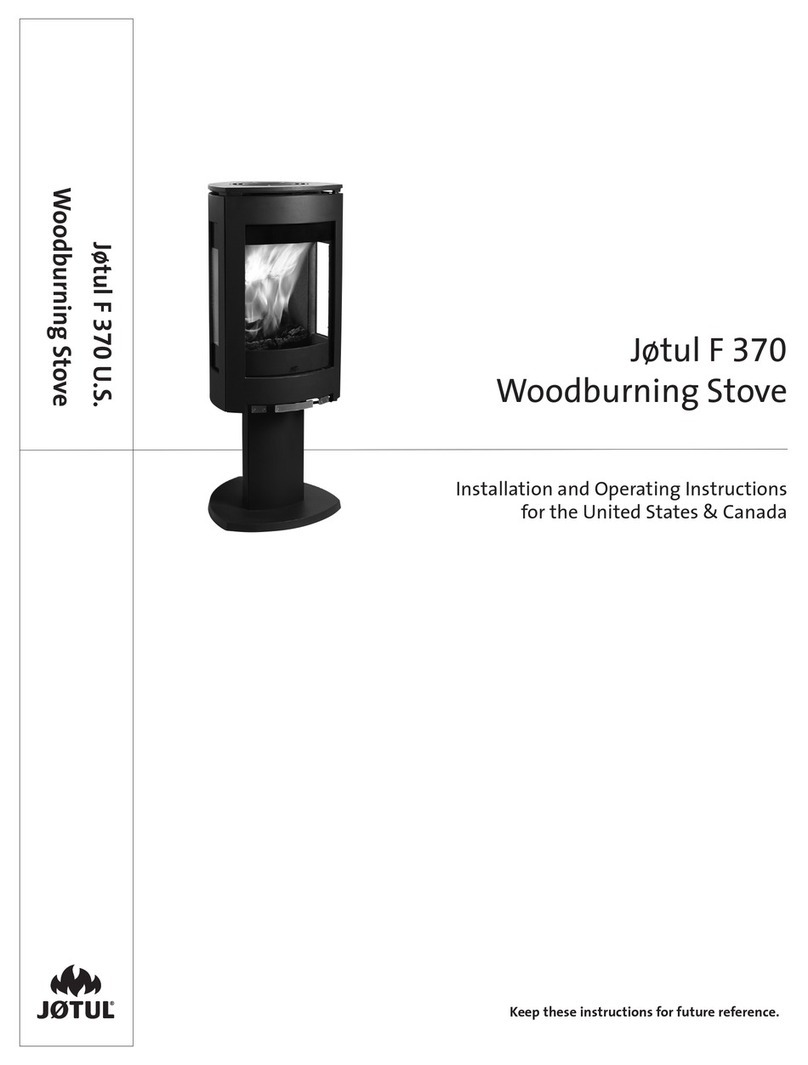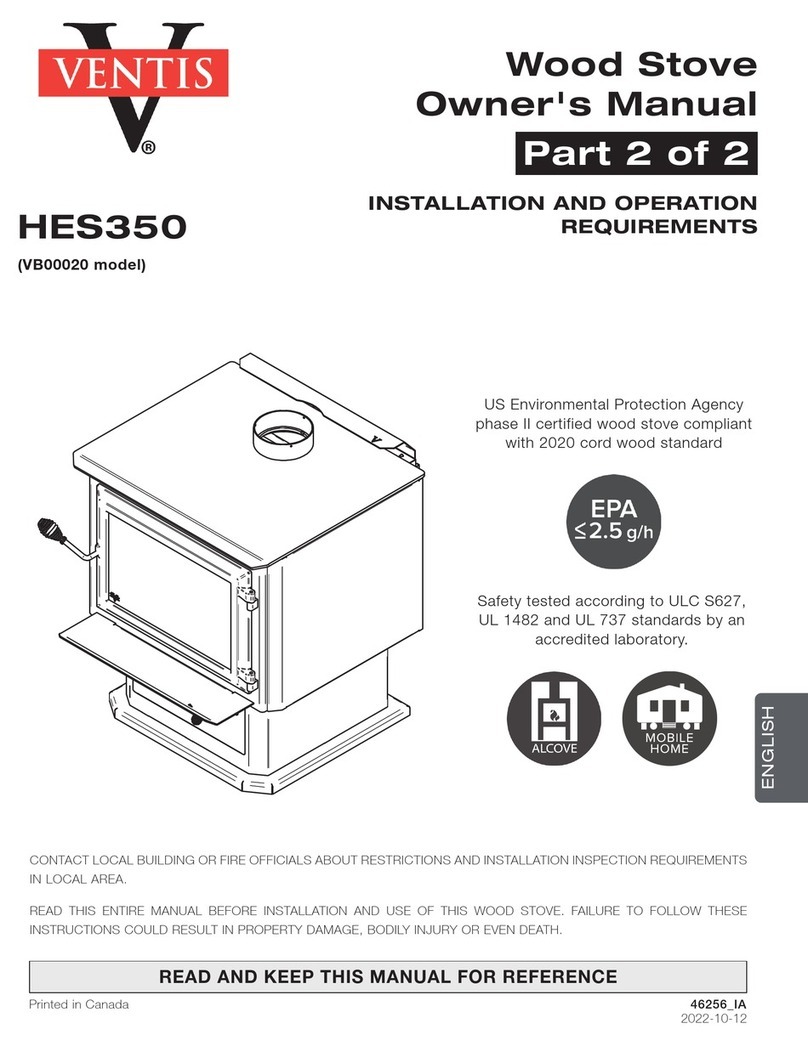3
Table of contents
Installation manual with technical data
1.0 Relationship to the authorities .....................3
2.0 Technical data ................................................3
3.0 Safety............................................................. 9
4.0 Installation ................................................... 9
5.0 Daily use ....................................................... 13
6.0 Service...........................................................14
7.0 Maintenance ................................................14
8.0 Optional Equipment ....................................14
9.0 Warranty.......................................................14
On all our products there is a label
indicating the serial number and
year. Write this number in the
place indicated in the installation
instructions.
Always quote this serial number when
contacting your retailer or Jøtul.
les combustibles recommandés.
Respectez les consignes d'utilisation. Utilisez uniquement
Verwenden Sie nur empfohlenen Brennstoffen.
Montage- und Bedienungsanleitung beachten.
Follow user`s instructions. Use only recommended fuels.
standard
Certificate/
The appliance can be used in a shared flue.
Minimum distance to adjacent combustible materials:
Emission of CO in combustion products
Serial no: Y-xxxx, Year: 200x
Manufacturer:
N-1602 Fredrikstad
Norway
Jøtul AS
POB 1441
Sweden
EUR Intermittent
Nominal heat output
Norway
Country
Operational type
Fuel type
Operation range
Efficiency
Klasse II
Classification
Standard
Flue gas temperature
Room heater fired by solid fuel
Product:
Jøtul
SP Sveriges Provnings- och
221546
Forskningsinstitut AB
SP Swedish National
Testing and Research
Institute
:
Approved by
:
:
:
:
:
:
:
Minimum distance to adjacent combustible materials:
OGC SP
EN
Serial no.
1.0 Relationship to the
authorities
Installation of a fireplace must be according to local codes and
regulations in each country.
All local regulations, including those that refer to national and
European standards, shall be complied with when installing the
product.
Before use read the Installation and Operating Instructions
carefully. Prior to using the product the installation must be
inspected by a qualified person.
A name plate of heat-resistant material is affixed in the base
/ pedestal. This contains information about identification and
documentation for the product.
2.0 Technical data
Material: Cast iron
Finish: Black paint
Fuel: Wood
Log length, max: 33 cm
Flue outlet: Top/rear
Flue pipe dimension: Ø150 mm, 177 cm2cross section
Weight F 164 / F 165: 145 kg
• with soapstone set: 225 kg
Weight F 166 / F 167: 140 kg
Weight F 166 C / F 167 C: 159 kg
Optional equipment: Fireplace set
Soapstone set - complete
(Not for Jøtul F 166 and Jøtul F 167)
Soapstone top
Dimensions, distances: See fig. 1a and fig. 1b
Technical data according to EN 13240
Jøtul F 164 Jøtul F 165
Jøtul F 166 Jøtul F 167
Jøtul F 166 C Jøtul F 167 C
Nominal heat output: 5 kW 5 kW
Flue gas mass flow: 5,0 g/s 5,0 g/s
Recommended
chimney draught: 12 Pa 12 Pa
Efficiency: 83%@5,9 kW 82%@5,9 kW
CO emission (13% O2): 0,06% 0,10%
CO emission (13% O2): 792 mg/Nm3 1242 mg/Nm3
Flue gas temperature: 260oC 260oC
Operational type: Intermittent Intermittent
Intermittent combustion is here taken to mean normal use of a
fireplace. I.e. that a new flame chamber is lit as soon as the fuel
has burnt down to the appropriate quantity of embers.
ENGLISH
N
O
R
D
I
C
E
C
O
L
A
B
E
L
2
7
8
s
t
o
v
e
s
0
1
2



